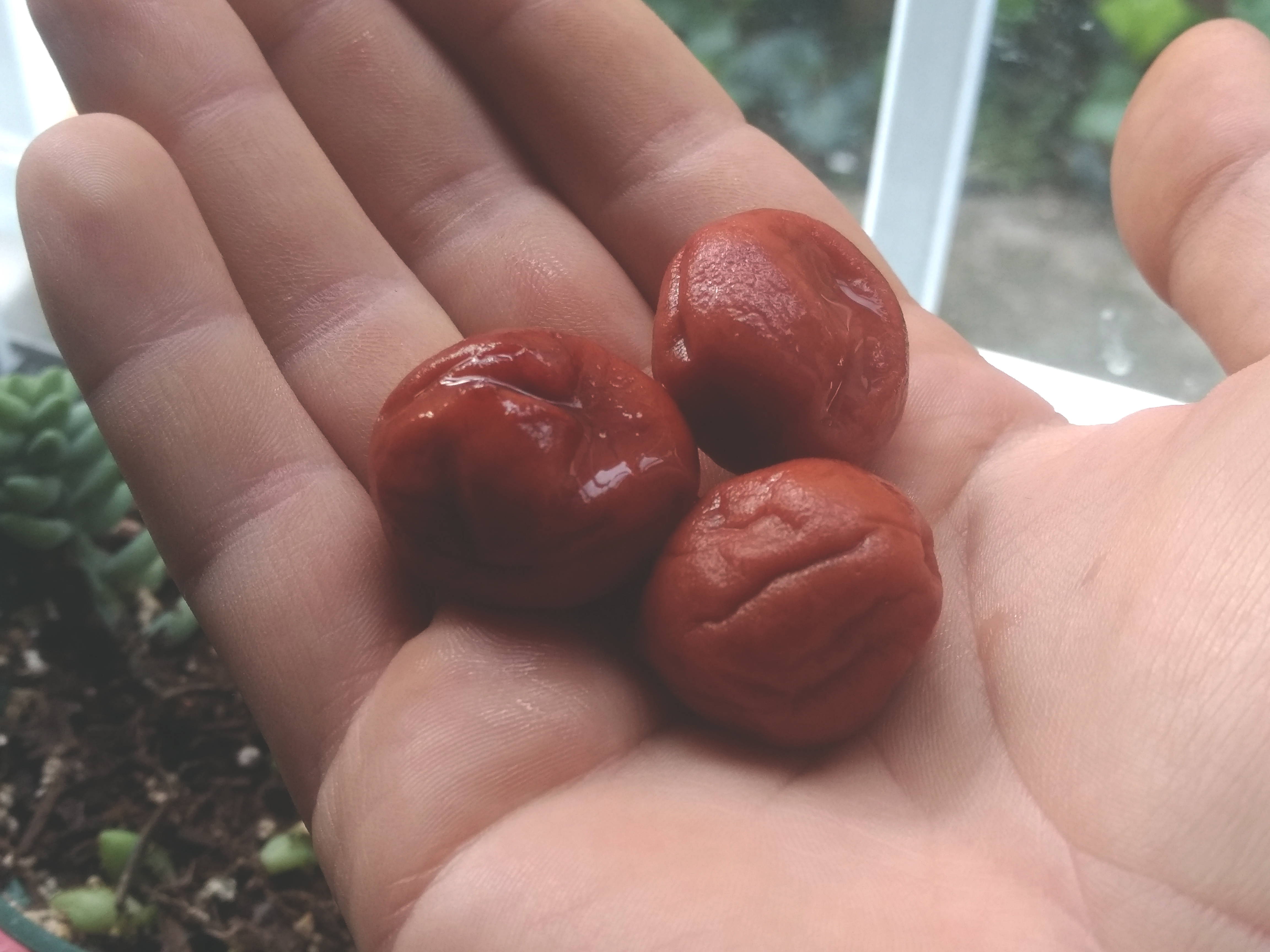
I believe the first time I heard about umeboshi was an episode of an anime where it was mentioned that someone only had pickled plum with rice for their lunch, as though this was a very sad thing. I have a general stance that when I hear about a food that sounds unappetizing I must make it my mission to try it. My logic here is that the only way terrible sounding food would continue to exist is if it is in fact delicious. Pickled plum sounded more odd than terrible, but reading up on umeboshi one finds a lot of discussion that suggests it is a very acquired taste.
I had a cute triangular onigiri mold that had been sitting in my ‘special tools’ drawer since being impulse bought at the japanese market long ago and so my first taste of umeboshi was a good christening for it. Not only was it tolerable, it was so delicious that I convinced everyone in the house to try it. In the time since then I’ve found my taste for umeboshi is significant and easily justifies turning it into a project.
What’s Umeboshi?
Umeboshi is the pickled fruit of the ume plum, Prunus mume, a tree that is more apricot than plum in the sense most are familiar with. I have not yet gotten my hands on fresh ume as it is February here now and they are harvested around late spring or early summer.
Calling umeboshi a pickled plum is not incorrect but doesn’t really give a good picture of the process involved. The process can be summarized as:
- Pack the fresh fruit in salt and compress
- Liquid comes out and forms a brine that the fruit sit in it until mid to late summer
- Salt fresh akajiso (a.k.a. red perilla) leaves, squeeze out most of their water by hand, add to ume jar
- Near the end of summer pluck the ume and shiso out and dry them in the sun for a few days
- Dry and grind the shiso to make a rice topping, return the ume to the brine for a year to age
Ume Ripeness
I’m still not entirely settled on this. I’ve done a deep dive across the internet and it seems like most Japanese people aim to start with yellow-ripe ume. This contrasts to a lot of english language material that seems to mostly prefer using ume that is still green and unripe, including Nancy Singleton-Hachisu’s much-referenced book Preserving The Japanese Way.
Sourcing
In my mind’s eye it seems like I’ve seen ume at Japanese and maybe even Korean markets near me in the past. This would have been prior to my interest in them so it’s hard to be sure what the situation will be this upcoming harvest season. It seems a few people are growing ume commercially in California, and I’ve been emailing with a farm up in the bay area about possibly buying some directly from them. Due to the ongoing situation it remains to be seen whether it’ll be practical to make that drive but I have definitely not ruled it out yet.